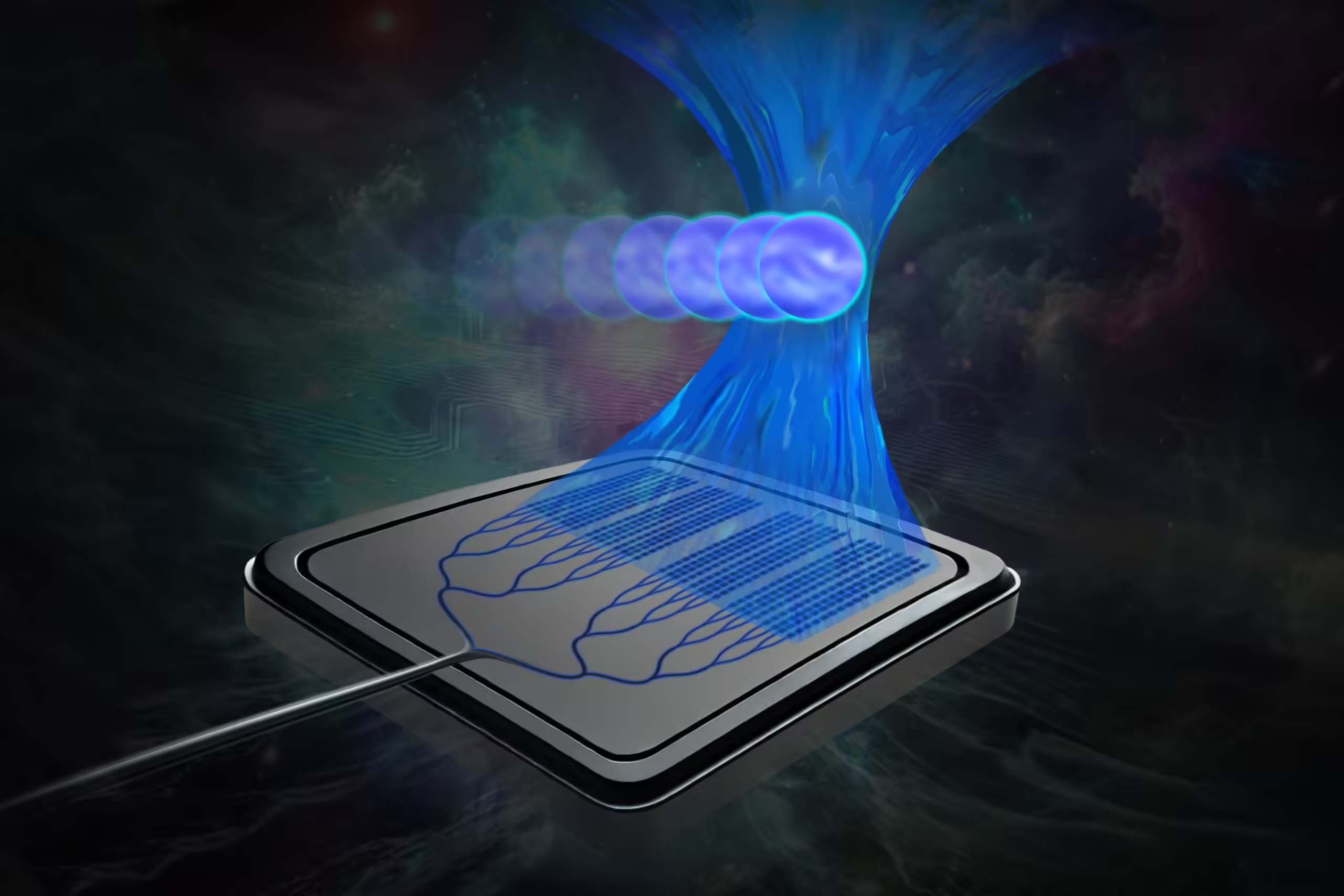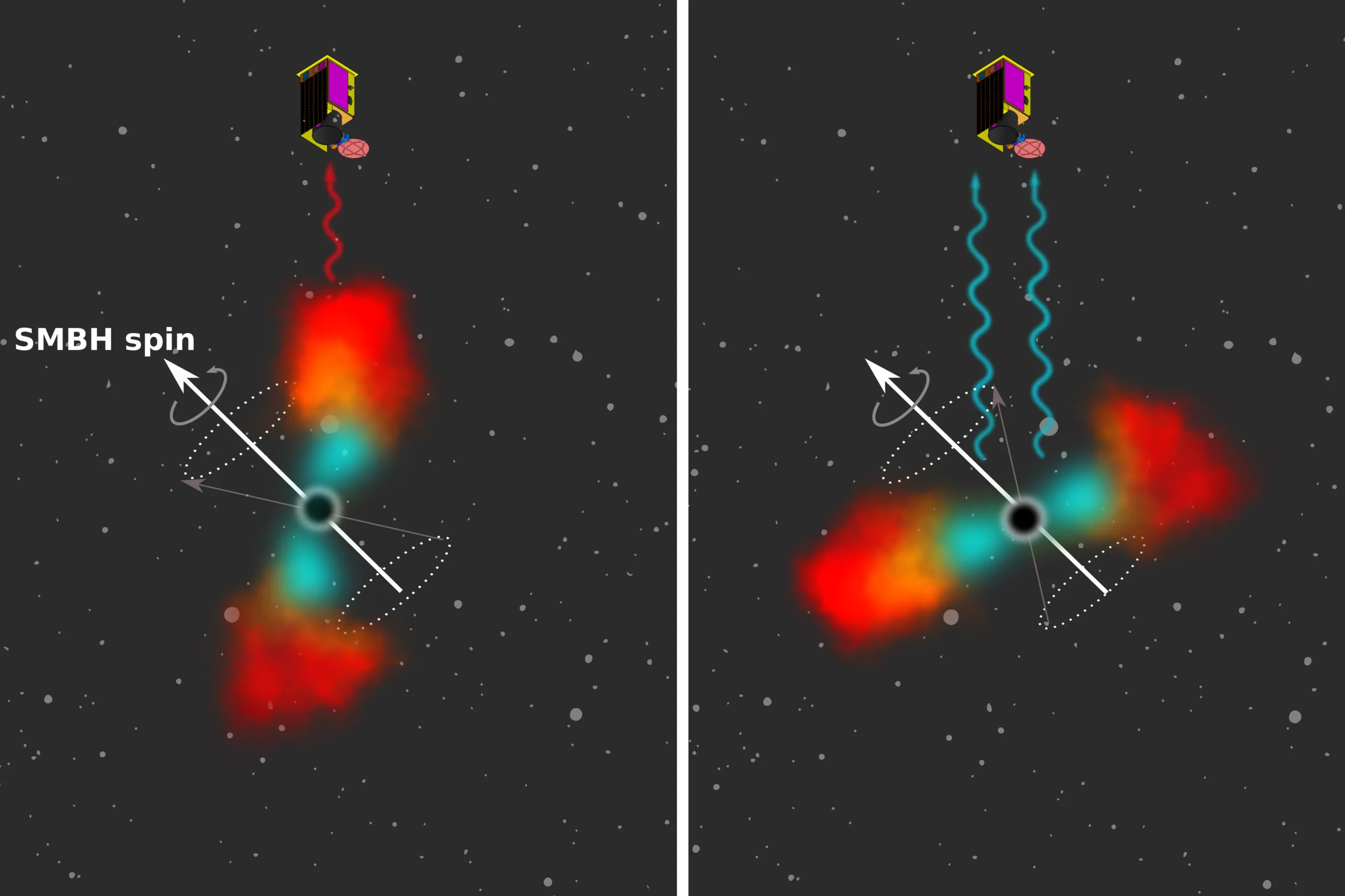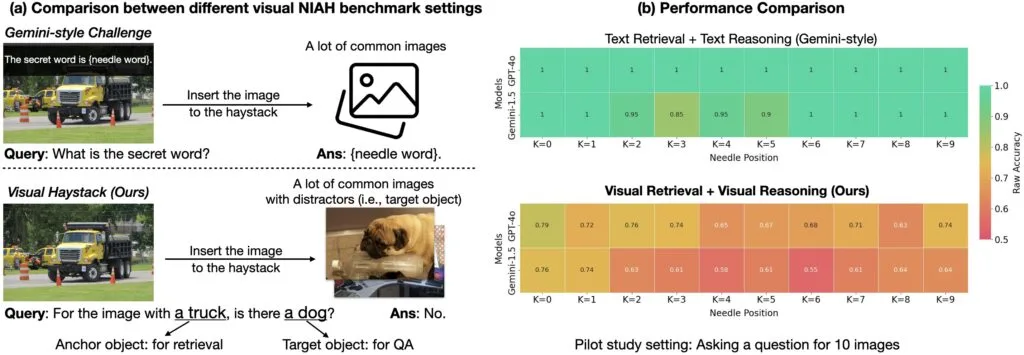Researchers at MIT have developed a miniature chip-based "tractor beam," reminiscent of the one that captures the Millennium Falcon in "Star Wars." This innovation could eventually assist biologists and clinicians in studying DNA, sorting cells, and investigating disease mechanisms.
Compact enough to fit in the palm of your hand, the device utilizes a beam of light emitted from a silicon photonic chip to manipulate particles a few millimeters from the chip’s surface. This light can penetrate glass slides that protect samples used in biological experiments, allowing cells to remain in a sterile environment.
Traditional optical tweezers, which trap and manipulate particles using light, generally require bulky microscope setups. However, chip-based optical tweezers could offer a more compact, mass-producible, widely accessible, and high-throughput solution for optical manipulation in biological experiments.
Other similar integrated optical tweezers can only capture and manipulate cells very close to or directly on the chip’s surface, which can contaminate the chip and stress the cells, limiting compatibility with standard biological experiments.
Using a system called an integrated optical array, MIT researchers have developed a new modality of integrated optical tweezers that can trap and manipulate cells over a hundred times farther from the chip’s surface.
"This work opens up new possibilities for chip-based optical tweezers by enabling trapping and manipulation of cells at much greater distances than previously demonstrated. It’s exciting to think about the various applications this technology could enable," says Jelena Notaros, the Robert J. Shillman Career Development Professor of Electrical Engineering and Computer Science (EECS) and a member of the Research Laboratory of Electronics.
The lead author and EECS graduate student, Tal Sneh, collaborated with Notaros on the paper, along with EECS graduate student Sabrina Corsetti, Milica Notaros PhD ’23, Kruthika Kikkeri PhD ’24, and William R. Brody Professor of EECS Joel Voldman. The research is published in Nature Communications.
A New Trapping Modality
Optical traps and tweezers use a focused beam of light to capture and manipulate tiny particles. The forces exerted by the beam draw microparticles toward the intensely focused light at the center, trapping them. By directing the light beam, researchers can move the microparticles, allowing them to manipulate tiny objects using non-contact forces.
Traditionally, optical tweezers require a large microscope in a lab, along with several devices to shape and control the light, limiting where and how they can be used.
"With silicon photonics, we can take this large system, typically at lab scale, and integrate it onto a chip. This is a great solution for biologists because it provides optical trapping and manipulation capabilities without the overhead of a complex bulk optical setup," explains Notaros.
Until now, chip-based optical tweezers could only emit light very close to the chip’s surface, so previous devices could only capture particles a few microns from the chip’s surface. Biological samples are typically kept in sterile environments using glass slides about 150 microns thick. Thus, the only way to manipulate them with such a chip is to remove the cells and place them on its surface.
However, this leads to chip contamination. Each time a new experiment is conducted, the chip must be discarded, and the cells placed on a new chip.
To overcome these challenges, MIT researchers developed a silicon photonic chip that emits a beam of light focused about 5 millimeters above its surface. This way, they can capture and manipulate biological particles that remain inside a sterile slide, protecting both the chip and particles from contamination.
Manipulating Light
The researchers achieve this using a system called an integrated optical array. This technology involves a series of microscopic antennas fabricated on a chip using semiconductor manufacturing processes. By electronically controlling the optical signal emitted by each antenna, the researchers can shape and steer the light beam emitted by the chip.
Motivated by long-range applications like lidar, most previous integrated optical arrays were not designed to generate the tightly focused beams needed for optical manipulation. The MIT team discovered that by creating specific phase patterns for each antenna, they could form an intensely focused light beam, which can be used for optical trapping and manipulation millimeters from the chip’s surface.
"No one had previously created silicon-photonic-based optical tweezers capable of trapping microparticles over a millimeter distance. This is an improvement of several orders of magnitude over previous demonstrations," says Notaros.
By varying the wavelength of the optical signal powering the chip, the researchers could steer the focused beam over a range greater than a millimeter with micrometer precision.
To test their device, the researchers began by attempting to capture and manipulate tiny polystyrene spheres. Once successful, they moved on to trapping and manipulating cancer cells provided by the Voldman group.
"Many unique challenges arose during the process of applying silicon photonics to biophysics," adds Sneh.
The researchers had to determine how to semi-automatically track the movement of sample particles, establish the appropriate trapping force to hold particles in place, and efficiently post-process the data, among other tasks.
Ultimately, they demonstrated the first cellular experiments using single-beam optical tweezers.
Building on these results, the team hopes to refine the system to allow for an adjustable focal height for the light beam. They also aim to apply the device to different biological systems and use multiple trap sites simultaneously to manipulate biological particles more complexly.
"This is a very creative and important paper in many ways," says Ben Miller, Dean’s Professor of Dermatology and Professor of Biochemistry and Biophysics at the University of Rochester, who was not involved in this work. "For one, given that silicon photonic chips can be manufactured at low cost, this potentially democratizes optical manipulation experiments. This might seem like something of interest to only a few scientists, but in reality, having these systems widely available will allow us to study fundamental problems in single-cell biophysics in a way that was previously reserved for a few labs, given the high cost and complexity of the instrumentation. I can also imagine many applications where one of these devices (or possibly an array of them) could be used to enhance the sensitivity of disease diagnostics."
This research is funded by the National Science Foundation (NSF), a MIT Frederick and Barbara Cronin Fellowship, and the MIT Rolf G. Locher Endowed Fellowship.



